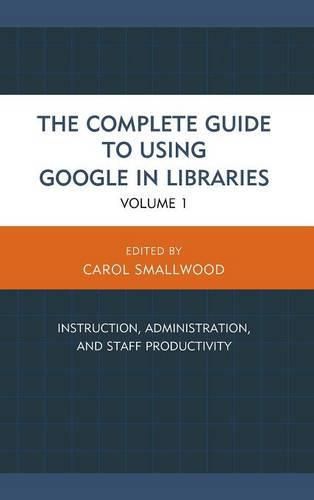Readings Newsletter
Become a Readings Member to make your shopping experience even easier.
Sign in or sign up for free!
You’re not far away from qualifying for FREE standard shipping within Australia
You’ve qualified for FREE standard shipping within Australia
The cart is loading…






Carol Smallwood’s The Complete Guide to Using Google in Libraries, Volume 1: Instruction, Administration, and Staff Productivity explores how Google’s suite of tools, from Google Docs (now Google Drive), Google Scholar, Hangout, Forms, and others made freely available to the Internet Community can be used by libraries to expand the role of digital operations in the management of library materials, to communicate with their patrons and collaborators, to exploit the resources on the Web, and many others. The book has 29 chapters organized into sections that focus on ways that Google’s suite of tools can be applied to address problems in a specific area of library concern. The section headings are: Library Instruction for Users; Collaboration within and among libraries; Library Administration; Collection Management; and Library Productivity. In each topical area, the chapters show how librarians are taking advantage of these tools to change the way that their library works. All of this without the burden of an additional bill to pay. Through these carefully selected case studies from real libraries, you will be able to learn about the surprising and powerful potential that exists through Google tools to improve library operations.
$9.00 standard shipping within Australia
FREE standard shipping within Australia for orders over $100.00
Express & International shipping calculated at checkout
Carol Smallwood’s The Complete Guide to Using Google in Libraries, Volume 1: Instruction, Administration, and Staff Productivity explores how Google’s suite of tools, from Google Docs (now Google Drive), Google Scholar, Hangout, Forms, and others made freely available to the Internet Community can be used by libraries to expand the role of digital operations in the management of library materials, to communicate with their patrons and collaborators, to exploit the resources on the Web, and many others. The book has 29 chapters organized into sections that focus on ways that Google’s suite of tools can be applied to address problems in a specific area of library concern. The section headings are: Library Instruction for Users; Collaboration within and among libraries; Library Administration; Collection Management; and Library Productivity. In each topical area, the chapters show how librarians are taking advantage of these tools to change the way that their library works. All of this without the burden of an additional bill to pay. Through these carefully selected case studies from real libraries, you will be able to learn about the surprising and powerful potential that exists through Google tools to improve library operations.